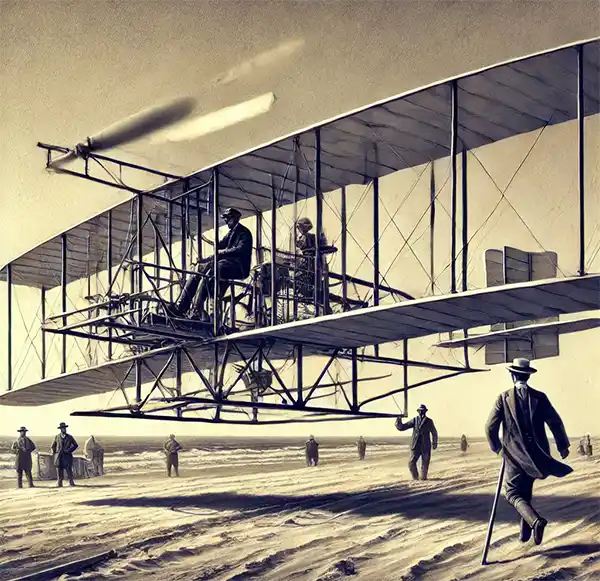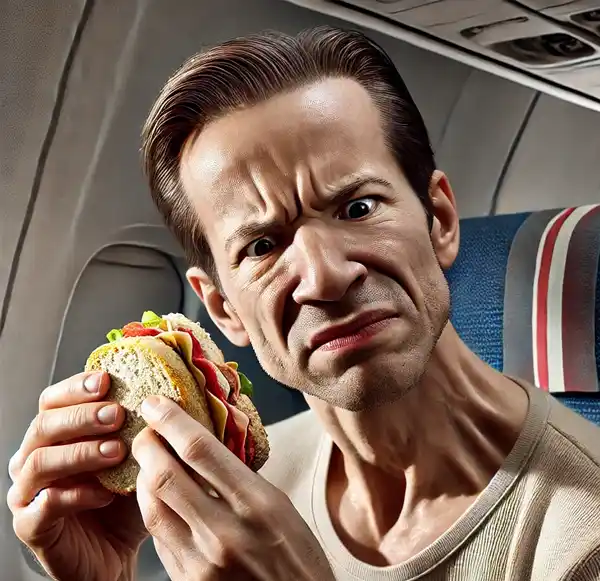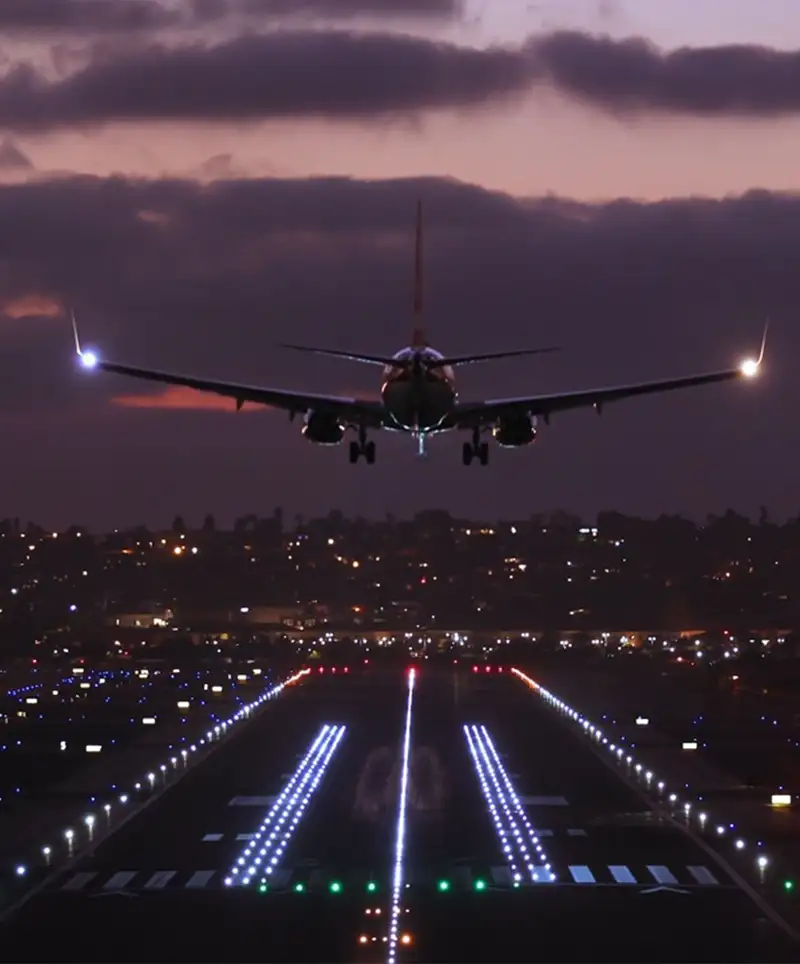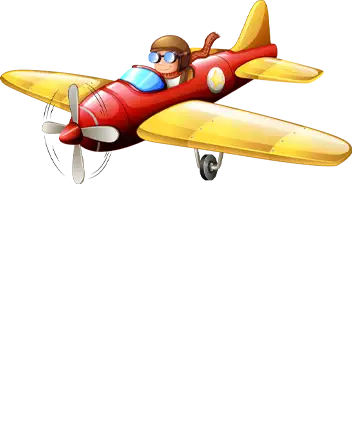Soaring Through the Skies of History
Every year on August 19th, we celebrate National Aviation Day, a day dedicated to the incredible journey of flight and the people who made it possible. Established in 1939 by none other than President Franklin D. Roosevelt, this day coincides with the birthday of Orville Wright, one-half of the legendary Wright brothers duo. As we take to the skies in celebration, let’s explore the history, the humor, and the high-flying excitement of aviation.
The Early Days of Flight
Long before Orville and Wilbur Wright were tinkering with their flying machines in Kitty Hawk, North Carolina, humans have been dreaming of soaring through the skies. Leonardo da Vinci, the Renaissance man with an insatiable curiosity, sketched out designs for flying machines in the 15th century, including a helicopter-like contraption and a winged glider. While his ideas never quite got off the ground (literally), they laid the foundation for future inventors to take a shot at the sky.
 Fast forward to the late 19th and early 20th centuries, and the dream of flight was becoming a reality. Enter the Wright brothers, two bicycle mechanics from Ohio who had a bit of an obsession with making things fly. On December 17, 1903, after years of experimentation and countless failed attempts, they finally did it. Their aircraft, the Wright Flyer, made history with a 12-second flight that covered a whopping 120 feet. Sure, it wasn’t exactly a transatlantic journey, but it was the first step toward making the skies our playground.
Fast forward to the late 19th and early 20th centuries, and the dream of flight was becoming a reality. Enter the Wright brothers, two bicycle mechanics from Ohio who had a bit of an obsession with making things fly. On December 17, 1903, after years of experimentation and countless failed attempts, they finally did it. Their aircraft, the Wright Flyer, made history with a 12-second flight that covered a whopping 120 feet. Sure, it wasn’t exactly a transatlantic journey, but it was the first step toward making the skies our playground.
The Wright brothers’ success sparked a worldwide fascination with aviation, and soon enough, inventors and daredevils alike were building their own flying machines. From biplanes that looked like they’d fall apart if you sneezed too hard, to zeppelins that resembled floating cigars, the early days of aviation were a mix of innovation, bravery, and a little bit of madness.
The Golden Age of Aviation
The 1920s and 1930s are often referred to as the Golden Age of Aviation, a time when flying was as glamorous as it was dangerous. This was the era of barnstormers—pilots who performed daring aerial stunts at fairs and festivals, often without any safety measures beyond a sturdy pair of goggles and a prayer. These aerial acrobats wowed crowds with death-defying feats, like walking on the wings of a biplane mid-flight or diving into a nosedive only to pull up at the last possible second.
But it wasn’t all about thrills and chills. The Golden Age also saw significant advancements in commercial aviation. In 1927, Charles Lindbergh became the first person to fly solo non-stop across the Atlantic Ocean, a feat that earned him international fame and the nickname “Lucky Lindy.” His plane, the Spirit of St. Louis, was a tiny, single-engine aircraft with no windshield—Lindbergh had to rely on a periscope to see where he was going. Talk about flying by the seat of your pants!
As aviation technology improved, so did the airplanes. By the 1930s, airlines like Pan Am were offering regular transatlantic flights, complete with in-flight meals and luxurious seating (well, luxurious by the standards of the day). Passengers dressed to the nines, treating air travel as a glamorous adventure rather than just a means to an end. The skies were the limit, and everyone wanted a piece of the action.
Jetting into the Future
The advent of jet engines in the 1940s revolutionized aviation, making air travel faster, safer, and more accessible than ever before. The first commercial jet airliner, the de Havilland Comet, took to the skies in 1952, offering passengers a smooth, pressurized cabin and a cruising speed that made propeller planes look like sloths in comparison. Suddenly, the world felt a lot smaller, and the dream of hopping across continents in a matter of hours became a reality.
With the rise of commercial aviation, the airline industry boomed. By the 1960s, flying had become the preferred mode of long-distance travel, and airlines competed fiercely to offer the best service, the most comfortable seats, and the tastiest in-flight meals. This was the era of the “jet set,” when flying was still seen as a luxurious experience rather than the slightly stressful ordeal it can be today.
The development of the Boeing 747 in the late 1960s ushered in the age of mass air travel. With its distinctive hump and capacity for hundreds of passengers, the 747 became an icon of the skies, known affectionately as the “Queen of the Skies.” Suddenly, flying wasn’t just for the wealthy; it was for everyone. The 747 opened up the world to millions of travelers, making distant destinations more accessible than ever before.
From Budget Flights to Space Travel
Today, aviation is an integral part of our lives, whether we’re jetting off on a weekend getaway or commuting across the country for work. Budget airlines have made air travel more affordable than ever, offering no-frills flights that get you from point A to point B with minimal fuss (and minimal legroom). And while the golden age of glamour may be behind us, the thrill of flight is still very much alive.
But aviation isn’t just about getting from one place to another; it’s about pushing the boundaries of what’s possible. Take, for example, the rise of commercial space travel. Companies like SpaceX and Blue Origin are working to make space tourism a reality, offering the promise of a trip to the stars—if you’ve got a few million dollars to spare, of course. It’s a far cry from the days of the Wright Flyer, but the spirit of innovation and adventure that drove those early aviators is still very much alive.
Turbulence, Tray Tables, and In-Flight Entertainment
Of course, no discussion of aviation would be complete without a nod to the quirks and oddities that come with flying. From the mysterious rules about turning off electronic devices during takeoff (really, what harm could your phone possibly do?) to the puzzle that is fitting your carry-on into the overhead bin, flying is full of little challenges that keep us on our toes.
 And let’s not forget the in-flight meal. For some reason, food tastes different at 35,000 feet, leading airlines to get creative with their menus. Whether it’s the classic chicken or pasta debate or the questionable sandwich that leaves you wondering, “What’s in this, exactly?”, airplane food has a charm all its own.
And let’s not forget the in-flight meal. For some reason, food tastes different at 35,000 feet, leading airlines to get creative with their menus. Whether it’s the classic chicken or pasta debate or the questionable sandwich that leaves you wondering, “What’s in this, exactly?”, airplane food has a charm all its own.
Then there’s turbulence—the rollercoaster of the skies. One minute, you’re cruising smoothly, and the next, you’re gripping the armrests for dear life as the plane bounces around like a ping-pong ball. But fear not! Pilots are trained to handle turbulence, and modern aircraft are built to withstand far more than a few bumps in the road—or air, as it were.
And who could forget the ultimate in-flight dilemma: to recline or not to recline? While some passengers treat the seat recline button like a personal invitation to create their own La-Z-Boy in the sky, others consider it the height of rudeness. It’s a debate as old as commercial aviation itself, and one that’s unlikely to be resolved anytime soon.
Celebrating National Aviation Day
So, how should you celebrate National Aviation Day? Whether you’re an aviation enthusiast with a model airplane collection that rivals the Smithsonian, or someone who simply enjoys the convenience of a quick flight to visit family, there are plenty of ways to get into the spirit.
- Visit an Aviation Museum: Many museums around the world offer incredible exhibits on the history of flight, from early aircraft to space exploration. It’s a great way to learn more about the pioneers of aviation and see some truly amazing machines up close.
- Take a Scenic Flight: If you’re feeling adventurous, why not book a scenic flight over your city or a nearby landmark? It’s a fantastic way to experience the thrill of flying and see the world from a new perspective.
- Watch a Classic Aviation Movie: From “Top Gun” to “The Aviator,” there’s no shortage of films that capture the excitement and drama of aviation. Pop some popcorn, settle in, and take to the skies from the comfort of your couch.
- Build a Model Airplane: For a hands-on activity, try building a model airplane. It’s a fun and rewarding way to celebrate aviation, and you’ll end up with a cool keepsake to display on your shelf.
- Book Your Next Adventure: If you’ve been itching to travel, why not use National Aviation Day as an excuse to book your next flight? Whether it’s a weekend getaway or a once-in-a-lifetime trip, there’s no better way to celebrate than by taking to the skies.
Aviation has come a long way since the days of da Vinci’s sketches and the Wright brothers’ experiments. What began as a dream of flight has become a reality that connects the world, fuels our sense of adventure, and continues to push the boundaries of what’s possible. Whether you’re a frequent flyer or someone who prefers to keep their feet on the ground, there’s no denying the impact aviation has had on our lives.
So, on this National Aviation Day, let’s tip our hats to the pioneers, the daredevils, and the everyday travelers who have made the skies their domain.
Please Share our Content






 Fast forward to the late 19th and early 20th centuries, and the dream of flight was becoming a reality. Enter the Wright brothers, two bicycle mechanics from Ohio who had a bit of an obsession with making things fly. On December 17, 1903, after years of experimentation and countless failed attempts, they finally did it. Their aircraft, the Wright Flyer, made history with a 12-second flight that covered a whopping 120 feet. Sure, it wasn’t exactly a transatlantic journey, but it was the first step toward making the skies our playground.
Fast forward to the late 19th and early 20th centuries, and the dream of flight was becoming a reality. Enter the Wright brothers, two bicycle mechanics from Ohio who had a bit of an obsession with making things fly. On December 17, 1903, after years of experimentation and countless failed attempts, they finally did it. Their aircraft, the Wright Flyer, made history with a 12-second flight that covered a whopping 120 feet. Sure, it wasn’t exactly a transatlantic journey, but it was the first step toward making the skies our playground. And let’s not forget the in-flight meal. For some reason, food tastes different at 35,000 feet, leading airlines to get creative with their menus. Whether it’s the classic chicken or pasta debate or the questionable sandwich that leaves you wondering, “What’s in this, exactly?”, airplane food has a charm all its own.
And let’s not forget the in-flight meal. For some reason, food tastes different at 35,000 feet, leading airlines to get creative with their menus. Whether it’s the classic chicken or pasta debate or the questionable sandwich that leaves you wondering, “What’s in this, exactly?”, airplane food has a charm all its own.








 "Sláinte!" is a traditional Irish expression used as a toast, equivalent to "Cheers!" in English.
"Sláinte!" is a traditional Irish expression used as a toast, equivalent to "Cheers!" in English.